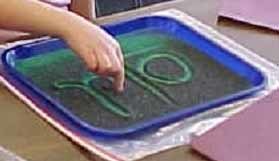Multisensory: More than Learning Styles
Posted by Audrey Bon on 12th Sep 2017
In my 4th grade classroom I prided myself on using different learning styles. I tried to incorporate movement into my lessons for kinesthetic learners. I made visual aids for my students who learned best visually. And I figured that my auditory learners were probably doing fine since I always explained everything aloud. The purpose, I thought, was to support each student’s strongest learning pathway. Basically, I ran down an imaginary checklist in my head: auditory students…check. visual students…check. kinesthetic students…check. The checklist told me I had included a little bit of what everyone needed. Job well done.
Multisensory Approach
Although there was nothing wrong with my checklist, it doesn’t live up to my current understanding of multisensory education. Teaching using a multisensory approach is not simply focusing on a student’s strongest learning style. It means that we use as many learning pathways as we can. The purpose of multisensory teaching is to strengthen weaker learning pathways and make the stronger pathways even stronger.
When teaching phonics using the Orton-Gillingham method, one of the best multisensory tools is the sand tray. In the Phonics First® program the sand tray is used when reviewing previous skills and when introducing a new skill. Every time a student uses the sand tray they are activating many different learning pathways all at once. As students write in the sand with their fingers they feel the sand moving to form the letter (tactile). The students can see the letter written in the sand (visual). They use large movements to write in the sand (kinesthetic). They also say the name of the letter and the sound it makes as they write (auditory). Using all these learning pathways at once allows the information to enter the brain in many ways. This strengthens recall, helping students to remember what they learned.
Additional Multisensory Ideas:
- Have students practice writing math facts in the air while saying the problem aloud (kinesthetic/auditory)
- Use shaving cream on desks for students to practice their spelling words (visual/kinesthetic)
- Choose an important new science or social studies vocabulary word. Write the word in large letters. Outline the letters with small dots of liquid glue. Once the glue is dry it makes a bumpy outline that students can feel. Have students say the name of each letter as they trace the bumpy glue dots with their fingers. Then they can give the definition, use the word in a sentence, illustrate the meaning of the word, etc. (visual, auditory, tactile, kinesthetic)
- Have students listen to an audiobook while also having the story in front of them. They can whisper read as they listen (auditory/visual)
Please visit Brainspring’s Teacher Store for more multisensory resources and products.
Audrey Bon, A.B.Ed.
Audrey is a tutor at Brainspring Learning Center in Plymouth.

